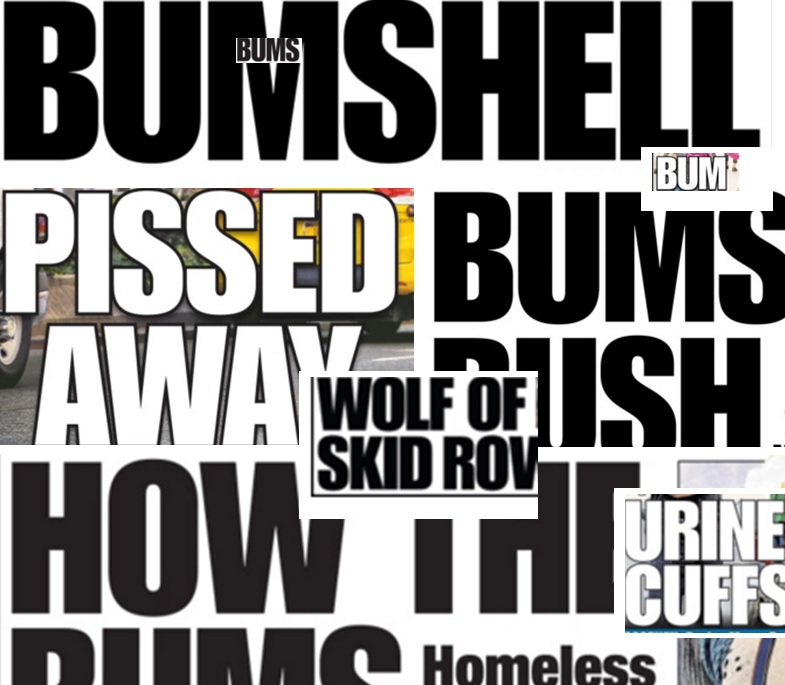
Courtesy NYPost
A year of headlines from the New York Post
St. Joseph’s Church, in Prospect Heights, was full of angry Brooklynites. It was 2002, and a significant portion of the neighborhood was still industrial, including empty lots filled with barrels of chemical waste. But the outraged crowd was there to protest what they perceived to be a much greater risk than toxic poisoning: a proposed small homeless shelter for women and children, to be located between Pacific and Dean Streets. The signs advertising the meeting included a map with concentric circles drawn around the proposed shelter, showing the distance each block would be from it, as if charting fallout from a nuclear blast.
Liberal bumper stickers adorned many of the neighborhood cars – “Visualize Peace” “No Farms, No Food” were some favorites – but only three of the 100 or so people there (two friends and myself) supported the shelter. Some attendees, who lived in the neighborhood for merely moments – and were obviously unaware that many of the shelter residents were lifelong Brooklynites – loudly decried the “invasion” of “their neighborhood.”
Some forecast that property values would plummet. The church’s priest warned of a massive wave of rape. When I pointed to the church’s crucifix, reminded the crowd that Christ was once homeless, and challenged them on whether they would let him live in the neighborhood, I was shouted down with clenched fists.
The tabloids further whipped up the fear and ignorance. Writing in the NY Post, Robert George opined that the homeless families were the ones with true power, since they have “plenty of politically-connected activists and sympathetic judges in their corner” but that the real “victims” were the local homeowners.
Despite the fear mongering, the Bloomberg administration did go ahead and site that small shelter there. Subsequently in Prospect Heights, crime continued to plummet and property values skyrocketed. An artisanal mayonnaise store opened. In 2010, the shelter was torn down to make way for a Barclay’s Center parking lot.
What did elite New Yorkers and the media learn from this, and from countless similar stories, citywide? Not much. They still treat homelessness as “a quality of life” issue for the non-homeless and still equate destitution with criminality.
The tabloids still sell fear of our homeless neighbors, and now they combine that with de Blasio bashing. The city’s shelter population increased by 31 percent under Rudy Giuliani, 81 percent under Michael Bloomberg, and five percent under Bill de Blasio. So, of course, it’s all de Blasio’s fault.
But the “responsible” media also makes similar mistakes. In a recent New York Times piece, J. David Goodman and Al Baker wrote, “Homeless encampments proliferated. Two officers, confronting armed men, were shot and killed. And many New Yorkers said they felt less safe. But fears that New York City was slipping back to a more dangerous time contrasted with reality… The overall crime statistics, of course, do not capture the increasing presence of homeless people on the streets and in shelters that has bedeviled the administration of Mayor Bill de Blasio.”
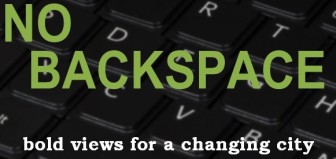
No Backspace is City Limits' new blog featuring a recurring cast of opinion writers passionate about New York people, policies and politics.
This too, falsely implies that homelessness is a problem that uniquely “bedevils” de Blasio. It also assumes that readers automatically equate homelessness with crime. Deeper in the article: “The homelessness visible on the streets ‘is not something that, from what I have seen, is in any way driving crime,’ said Dermot F. Shea, the deputy commissioner who oversees the Police Department’s CompStat crime-analysis efforts.” So, after twice asking whether homelessness causes crime, the article finally concludes: no, it does not.
Can you imagine the Times running a story that lead with this?: “The city’s African-American population is increasing. And many New Yorkers said they felt less safe. But fears that New York City was slipping back to a more dangerous time contrasted with reality.” Of course not. Even if the point of the story was that such fears were unfounded, so much as stating that others equated African-Americans with crime would be – and should be – off limits, just as it should be off limits to even consider the false notion that homeless people are automatically criminals.
The vast majority of crimes are committed by people who have homes. Yet in the relatively rare instances when homeless people do commit serious crimes, they are almost always described in mainstream media accounts as homeless. And the media rarely reports on the too-frequent crimes against homeless victims.
Yet, as the movie “Spotlight” reminds us, intrepid reporters (backed by indomitable editors) still investigate and uncover important stories, no matter the challenges. In 2013, the Times’ Andrea Elliot wrote a searing, detailed series chronicling the Job-like suffering of a homeless child. Melissa Russo and Evan Stulberger, for WNBC-4 TV, and Nikita Stewart of the Times, reported on the absurdly long travel times to school that some New York children face. Mayor de Blasio responded to both by pledging to fix the problems. That’s a model of how effective media coverage can prompt improvements from a government willing to listen.
Most homeless people are mentally fit and sober, but they earn too little money to be able to afford housing. Yet New Yorkers often assume that all homeless people are mentally ill and/or substance abusers and the major problem is that they annoy upstanding citizens. Demagogues pray on those stereotypes, and use them to de-humanize and threaten. Former Mayor Giuliani recently offered this advice about the homeless: “You chase ’em and you chase ’em and you chase ’em and you chase ’em, and they either get the treatment that they need or you chase ’em out of the city.”
The New York Post placed on its cover a photo of a homeless man urinating in the street, with the charming headline: “20 years of cleaning up NYC pissed away.” Yes, they defined our homeless neighbors as pests that needed to be “cleaned up.” Not to be outdone in homeless-bashing, the local police Sargent’s Benevolent Association created an Flickr account called, “Peek-a-Boo, We See You!,” and urged cops and their supporters to upload photos of homeless people.
All told, these efforts aim to strip indigent New Yorkers of their basic humanity, which, as history proves, is the first step towards brutalizing them.
But it’s far too facile to simply blame these problem on conservative media outlets or politicians. Many self-proclaimed liberals – who proudly (and rightfully) condemn the hate mongering bigotry of Donald Trump – themselves have demonized their homeless neighbors. They’ve opposed homeless shelters or other forms of affordable housing in their neighborhoods and voted for Giuliani and Bloomberg, under whom homelessness soared. Many more have blanched at paying the higher taxes required to fund the job creation and social service efforts needed to end homelessness once and for all.
If we want to see who truly causes homelessness in New York City – as well as who has the power to end it – we all need to look into the mirror.
 Joel Berg is executive director of the New York City Coalition Against Hunger and author of the forthcoming book America We Need to Talk: a Self Help Book for the Nation, to be published by Seven Stories Press in the Fall of 2016.
Joel Berg is executive director of the New York City Coalition Against Hunger and author of the forthcoming book America We Need to Talk: a Self Help Book for the Nation, to be published by Seven Stories Press in the Fall of 2016.



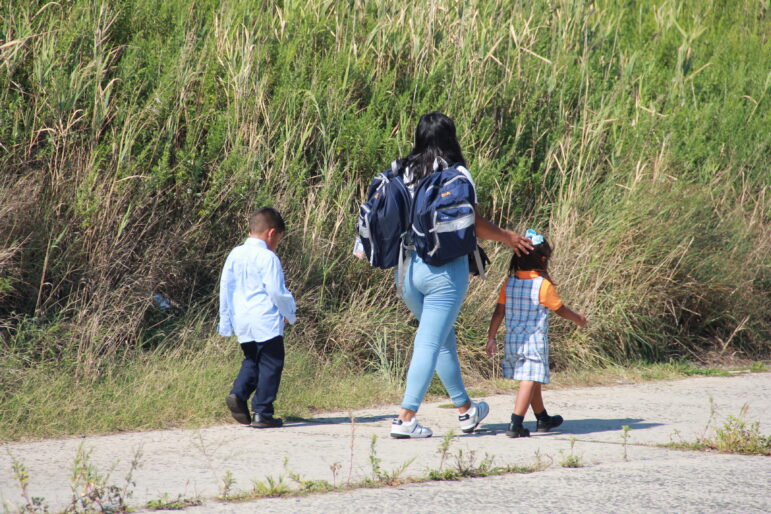
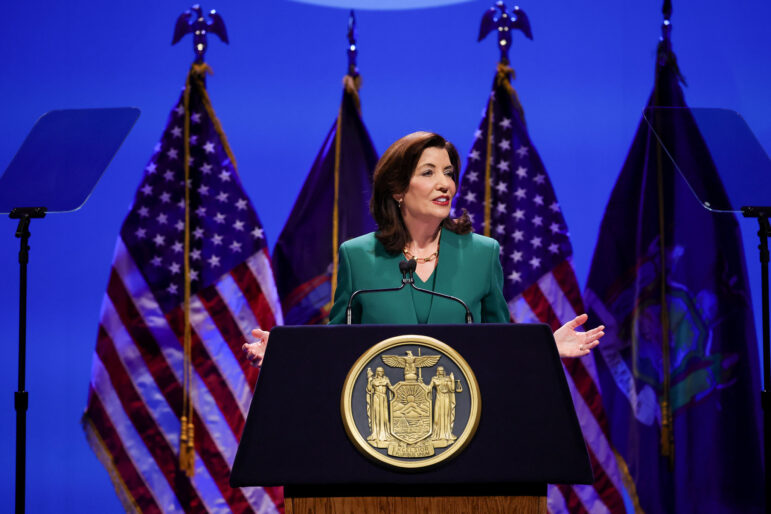
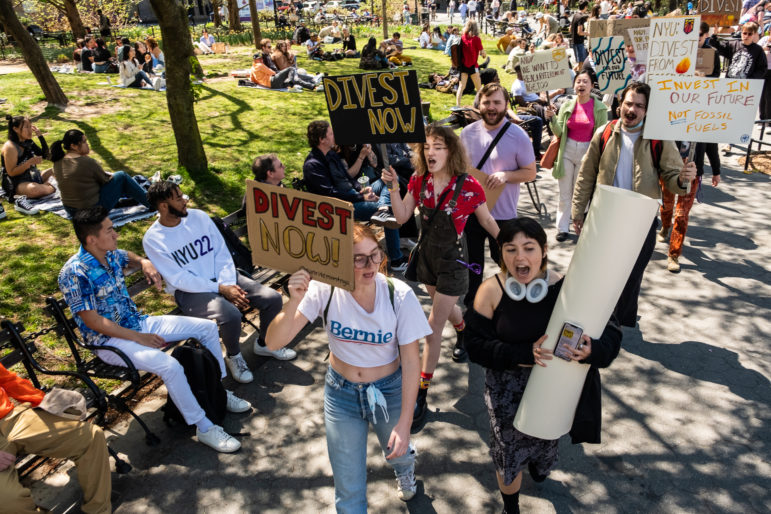
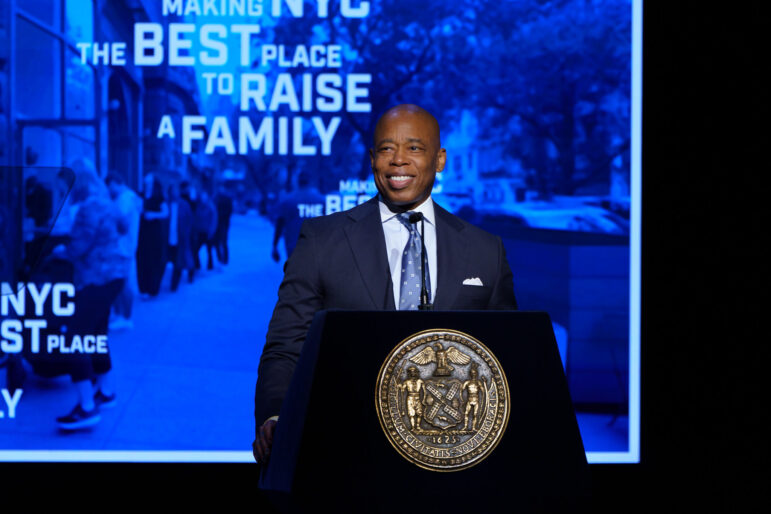


7 thoughts on “No Backspace:
Fear and Loathing of Our Homeless Neighbors”
The lack of a focus on building housing that is affordable to the homeless is appalling. BdB ran on a platform of eliminating the “Two Cities.” But he’s done nothing of the sort since he came in. Instead, he’s a wolf (catering to developers) in sheep’s clothing (seeming liberal friend of the “masses”). Using AMI is fair? Upzoning is fair? His admin has the nerve to characterize 2.5K+ monthly rents as affordable? Really? Affordable for whom? How can we not blame deBlasio for what has happened since he took office – namely, what he said would happen, has not happened, so of course the number of homeless is expanding under BdB, rather than going down! BdB is another Mike Bloomberg in terms of catering to the developers, and this is exactly why he hasn’t been able to make a dent in the homeless population. The emphasis continues to be on luxury housing, with usually far too few (high-priced) affordable apartments mixed in. The lottery system epitomizes the degree of the housing crisis, which continues unabated under BdB.
And the homeless population is the tip of the iceberg. There are plenty of families in apartments that have no choice but to live doubled up because rents have climbed due to BdB’s pro-gentrification policies, and they can’t afford a place of their own. Why is infill LUXURY housing going up at Hallets Cove in Queens, Mr. de Blasio, when there is such a pressing need for housing for the homeless? Why didn’t you build infill housing the homeless could afford at Hallets Cove? Why?
BdB has not been a friend to moderate income New Yorkers. The only “change” we see is more and more luxury developments going up, just like under the Rep admins, with very few so-called affordable apartments available by LOTTERY. This is unacceptable, and voters will look for a genuine, not sell-out, Democrat, to lead them when the Dem primaries of 2017 roll around.
Land and labor are so expensive in NYC that only luxury and near-luxury apartments can be built. There is no way that the city or any builder could afford to build low-rent units in Hallet’s Cove. There is no easy solution to this problem.
Ah, but there’s always land and money when it comes to accommodating the super-rich in super-tall luxury high-rises. Read the following article http://www.theglobalist.com/us-economy-a-money-laundering-operation/ and then the absurdity of your statement “There is no way that the city or any builder could afford to build low-rent units in Hallet’s Cove” will be obvious.
The super-rich can pay the higher rents necessary to make their high-rises profitable. ‘Affordable’ (taxpayer subsidized) apartment buildings can’t do the same.
I see both sides of this. But homeowners are understandably sensitive to homeless shelters opening in their neighborhoods due to the increase in crime and disruptive behavior, that usually follows.
There is no idea to give housing to anyone who is low income or poor. Vicky Been should be exposed as a NAZI operative. Same thing in the Bronx with the rezoning plan for Jerome Avenue, it all came out at the Bronx Gentrification forum on Sunday. They want to destroy all the auto shops and machine tool businesses. Instead they will destroy it, and then they will not even have the money to build anything…. even if they did, 80/20 is a joke. Even the 20% have to make $69,000 a year. The speculators want their real estate because under Dodd-Frank banking law, the bail in is when the depositors’ money is confiscated. Really is a Glass Steagall Act a la Franklin Roosevelt of 1933 now, a bankruptcy reorganization protection of people and business. Otherwise we will have mass death, mass homelessness, a horror show.
Really should look at http://www.larouchepac.com this financial system is bankrupt. No more free goodies from the bankers and real estate people. It is either a Glass Steagall Act bankruptcy reorganization, or mass destruction, mass death.